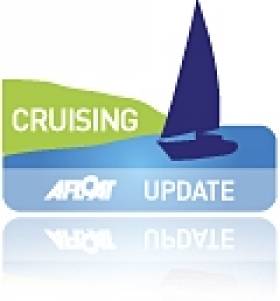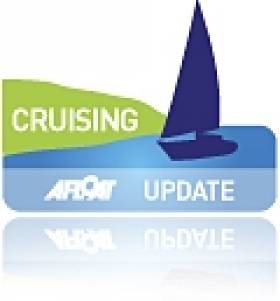Displaying items by tag: ARC
200 Crews for Atlantic Rally for Cruisers 2011
World ARC Circumnavigation Rally Goes Annual
World ARC is currently a biennial event, starting in January and finishing 15 months later. The current event started in January 2010 and the next will start in January 2012.
Demand for Organised Cruising
Joining World ARC provides practical support in port and at sea, the camaraderie of a close group of fellow cruisers, and a structure that provides peace of mind. Interest in World ARC has increased in the last year, with over 30 boats ready to take part in World ARC 2012.
Demand from sailors for a rally in the 'off' years has lead to the decision to make World ARC an annual event. This will make it easier for cruisers to sail half the rally, then take a year out to explore on their own, before rejoining the subsequent rally to complete their circumnavigation. An annual event also enables more people to join the rally.
Who Sails on World ARC?
World ARC is a multicultural event, with participants drawn from all nationalities. Participants are drawn from many backgrounds: some are taking a sabbatical before returning to work, while others are enjoying retirement. There are usually family boats sailing with children.
The boats themselves are a cross-section of popular cruising designs, from proven blue-water marques like Hallberg Rassy, Oyster, OVNI and Amel to production cruisers from high volume builders such as Bavaria, Lagoon and Jeanneau.
A Rally with History
World Cruising Club organised the first-ever circumnavigation rally, Europa 92. Since then, the company has organised seven successful circumnavigations. The first World ARC was held in 2008-09, and he current edition, World ARC 2010-11, is drawing to a close in the Caribbean after 26,000Nm and 15 months.
World ARC follows a route that makes the most of the Trade Winds and seasonal weather systems, whilst enabling the participants to enjoy some of the most beautiful and remote cruising destinations. From the first World ARC, World Cruising Club made a decision to follow the classic sailing route around the Cape of Good Hope in South Africa, avoiding areas of political instability and piracy.
Since 1992, World Cruising Club has enabled over 200 boats and 950 people to realise their dream of sailing safely around the world.
No Irish Cruisers Among Record Atlantic Rally Fleet
With one week to go before the ARC 2010 fleet leave Las Palmas for Rodney Bay in Saint Lucia, there are no Irish yachts entered in a fleet of 205 yachts drawn from 28 nations. Crews from the yachts already berthed in the marina took part in the official ARC 2010 Opening Ceremony. The final 34 yachts are expected to arrive in Las Palmas over the next few days, bringing the fleet total to 239 yachts, an all-time ARC record.
At midday Sunday 14 November hundreds of ARC participants took part in the Official Opening Ceremony for ARC 2010. Flag bearers from 28 different nations representing the countries of the yachts in this year's event led the procession as it made its way around the marina. The grand parade had a real festival atmosphere as crews gathered at the northern end of the marina and were led by an enthusiastic brass band cheered on by local spectators.
Andrew Bishop, Managing Director of World Cruising Club declared ARC 2010 officially "open" and the country flags were proudly hoisted on flagpoles around the marina as fireworks were launched in celebration. Sr Benito Cabrera from the Concejal del Ayuntamiento de Las Palmas (City of Las Palmas), Sr Jesus Ramirez, President of the Port of Las Palmas and Sr Roberto Moreno, President of the Patronato de Turismo de Gran Canaria were all thanked for their 25 year support and help. High Commissioner of Saint Lucia, Eldridge Stephens, gave a rousing speech thanking ARC participants for visiting Saint Lucia after the devastation caused hurricane Tomas 10 days ago.
Sr Moreno then welcomed all the international sailors on behalf of the whole Island of Gran Canaria. The support of the Gran Canaria tourist board for the ARC is one of the longest running sailing sponsorships for a regatta.
The fiesta atmosphere continued with ARC participants and local people taking part in Don Pedro's famous International Dinghy Race. The race across the marina encourages crews, dressed in a variety of fancy dress costumes, to use any tactics they like to outwit their opponents. Water bombs and flour missiles were commonplace! A prizegiving for the dinghy race and Don Pedro's dockside BBQ went on late into the evening.
The second week of the pre-start is the busiest, as more crew fly in and the yachts start their provisioning and finish off last minute preparations for the Atlantic crossing.































































